Saturday 4th June 2022
Matilda had decided that, after our New York deli breakfast, she would sample her cheesecakes, so when we returned to the hotel, she sliced them both in half so that she could compare.
Even though she had carried them round New York for several hours the day before, she was not disappointed: both were light, fluffy and flavoursome: special cheesecake indeed. The plain perhaps won by a whisker.
We had previously investigated getting Covid tests as we needed to provide proof of a negative test, taken within the last 48 hours, together with our vaccination status before we would be allowed onboard.
The hotel receptionist suggested we went to a nearby surgery, but here the GP receptionist quoted $220 each for them to run the tests. A very helpful gentleman who was sitting in the waiting room said we would be able to get it done at one of the many pop-up testing stations we had passed. We found that here the cost would be just $50 each.
So, before starting the day, we went to have swabs professionally rotated around our nasal passages.
We then wanted to check out the transport to the embarkation point for our cruise home aboard the Queen Mary II [QMII] which we believed to be Pier 12, in Brooklyn. Surprisingly none of the paperwork specified the precise embarkation point. Robert researched public transport and we took the subway and then a local bus which took quite a circuitous route round the suburbs. All the buildings at Pier 12 were closed and deserted but Robert identified the empty space where our ship would be docked the next day.
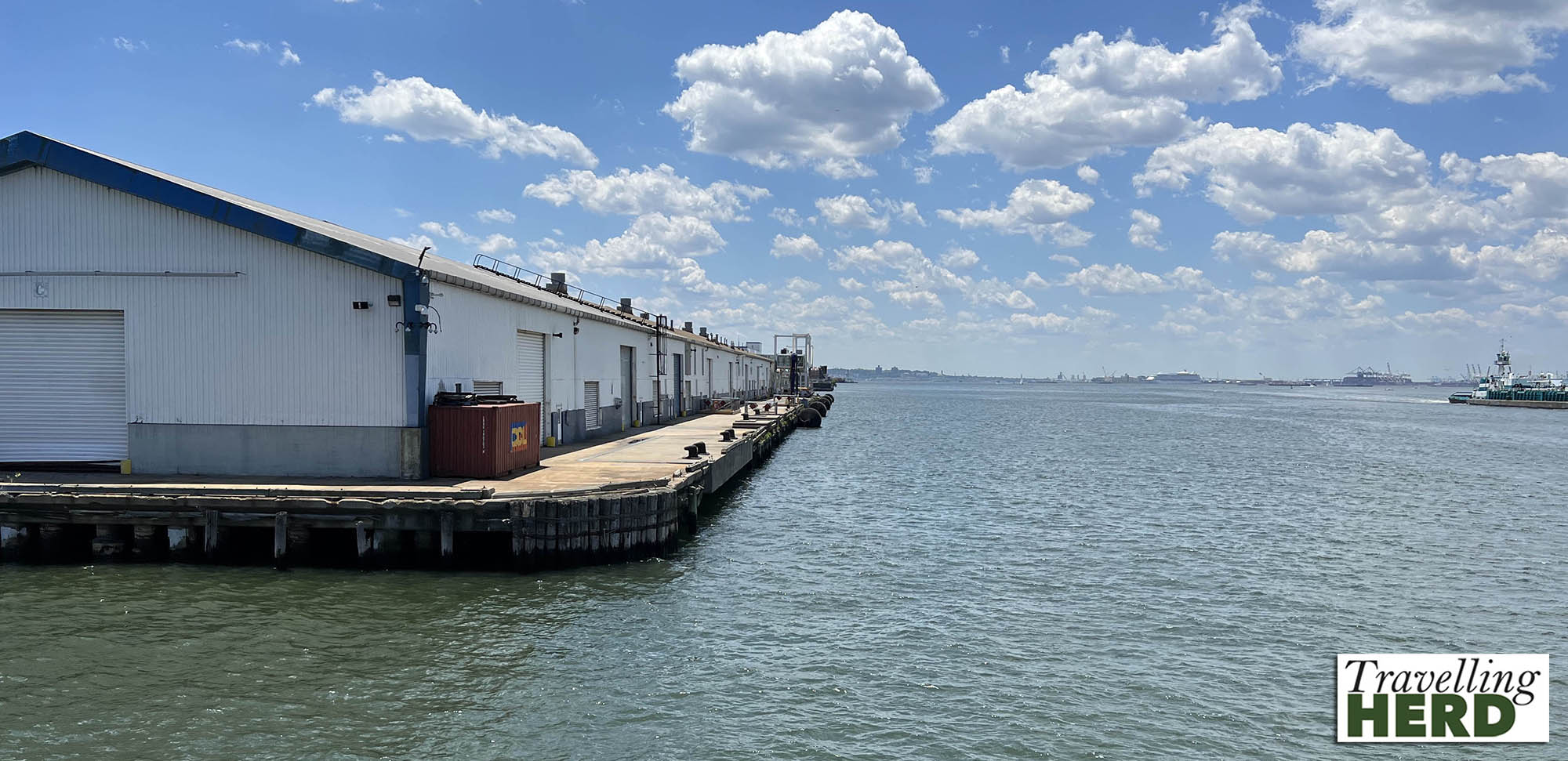
Right next to the pier, we found a convenient river taxi stop and decided to take this route back to Lower Manhattan.
Once again we stood on the deck in the sunshine with the breeze in our hair, enjoying the views.
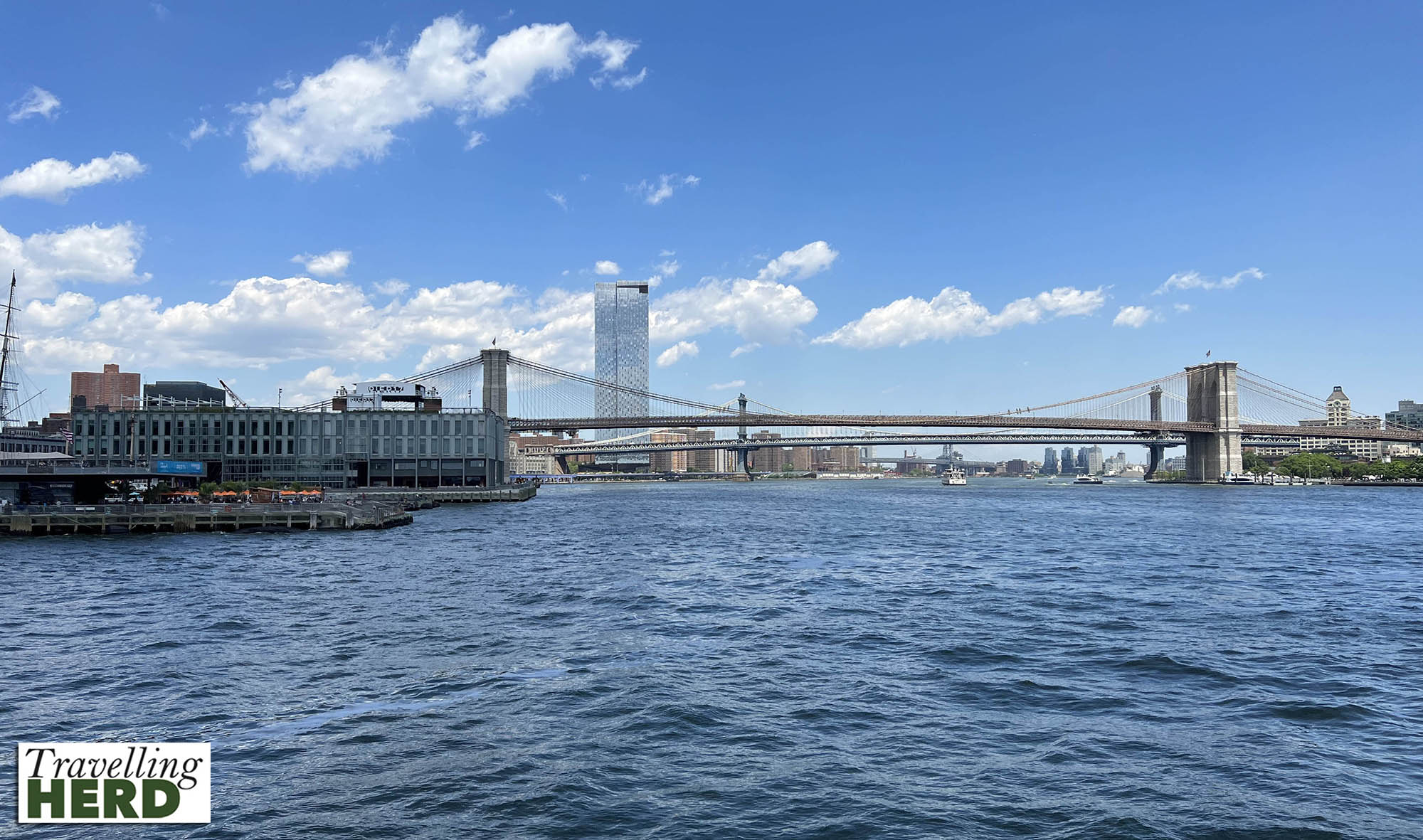
We felt that approaching the QM2 from the water seemed far more appealing than taking the bus again and we agreed we would use the river taxi the next day.
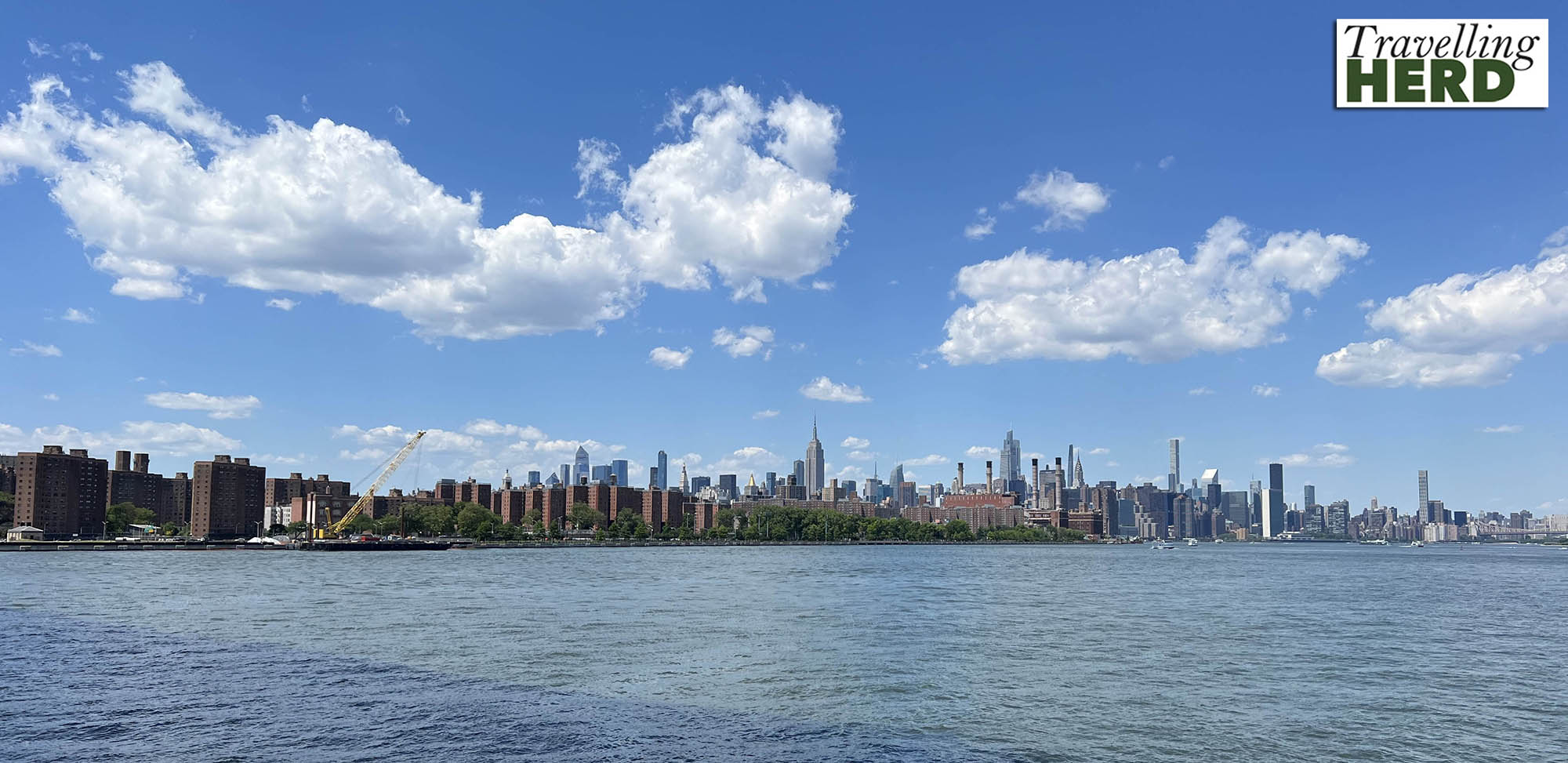
The Guggenheim Museum in New York was designed by Frank Lloyd Wright and we wanted to see the exterior of this famous building before we took a stroll in Central Park.
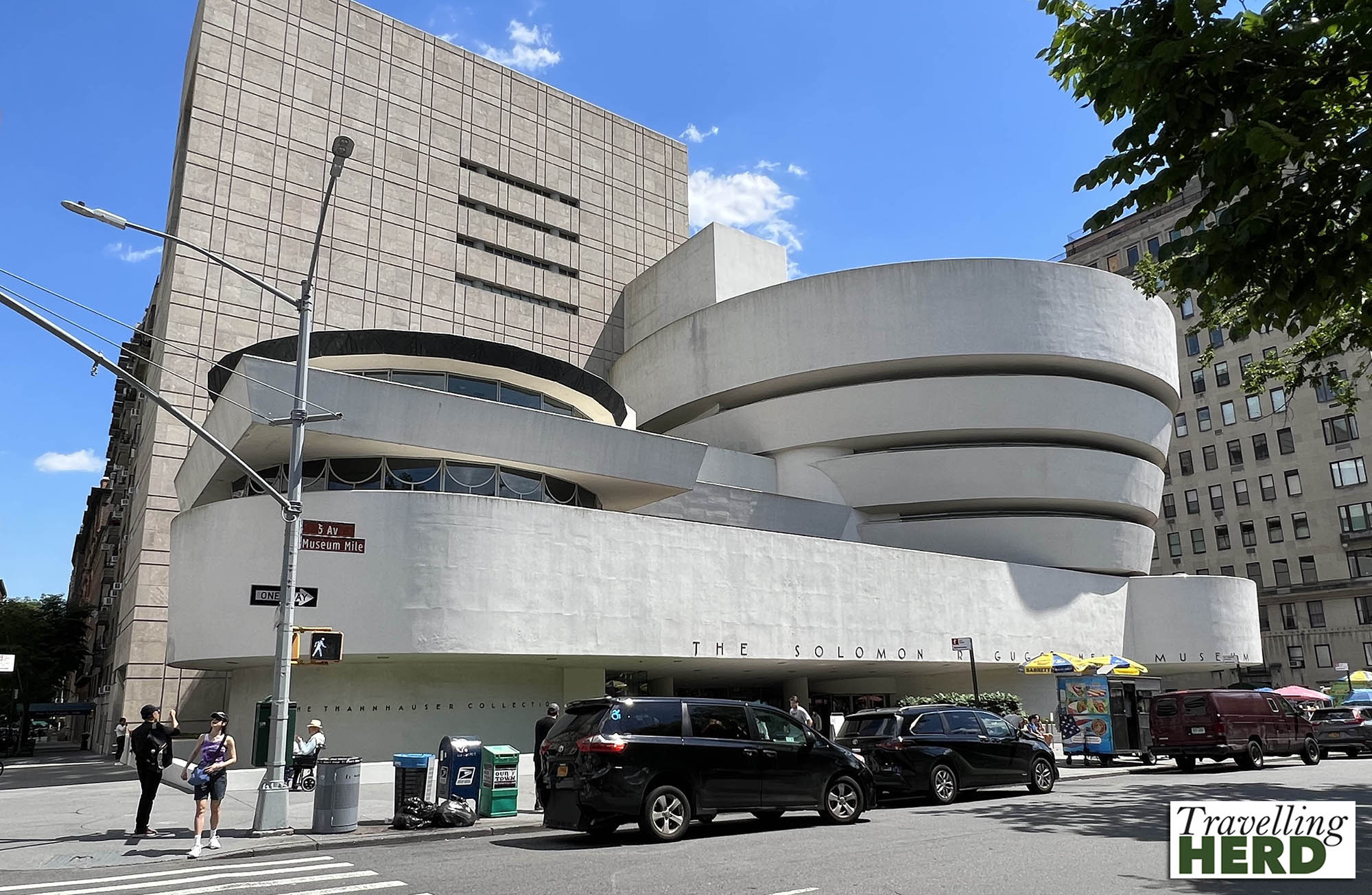
The Cleopatra’s Needle in Central Park is one of a pair which were made in Heliopolis [now Cairo] and were moved to Alexandra by Cleopatra over 1,000 years later. One of the pair was given to Great Britain, transported to London and erected on the Victoria Embankment in 1877. The one in Central Park was erected there in 1881 and is supported on metal fixings shaped like crab claws.
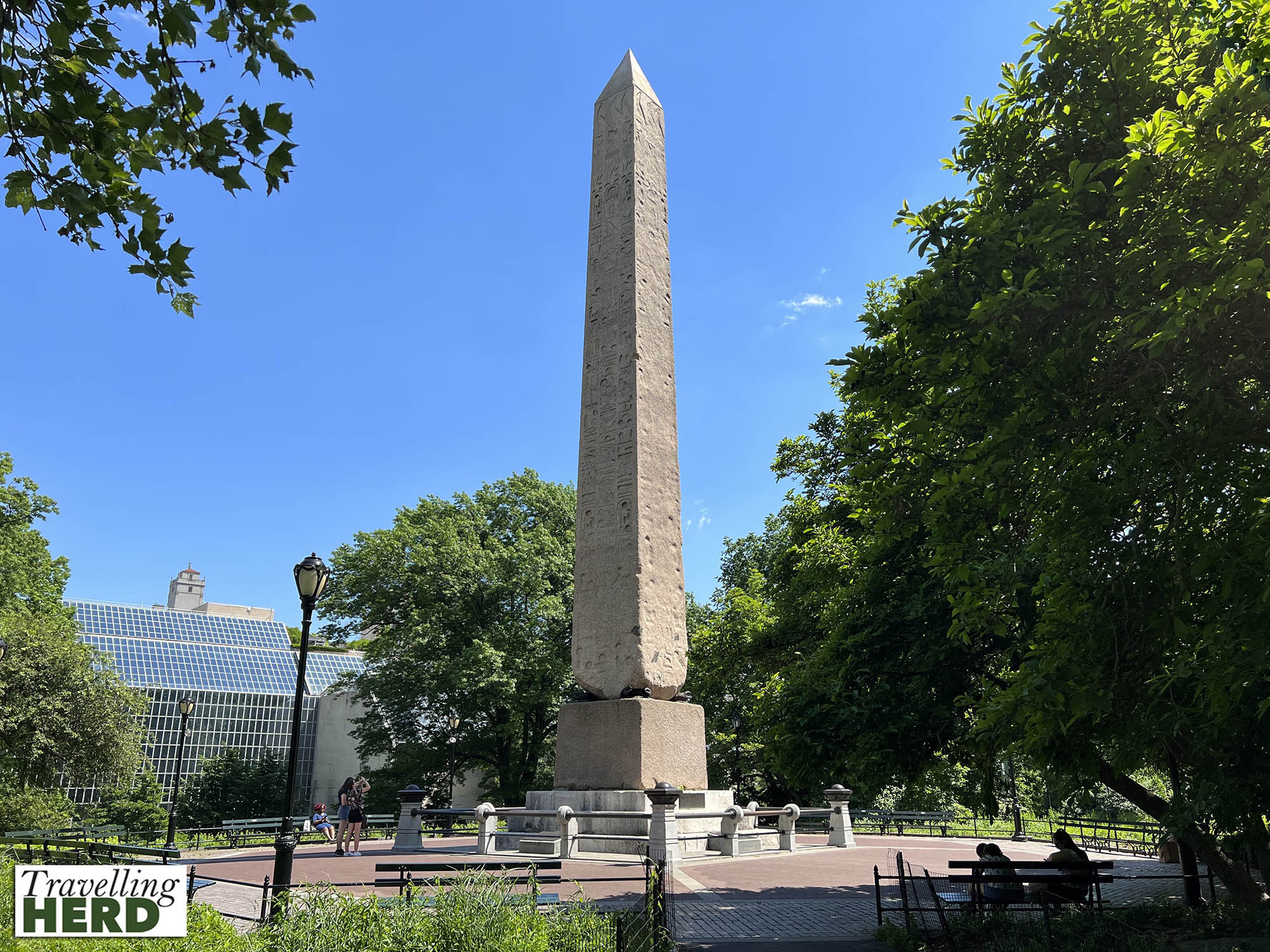
Central Park includes the two acre Turtle Pond.
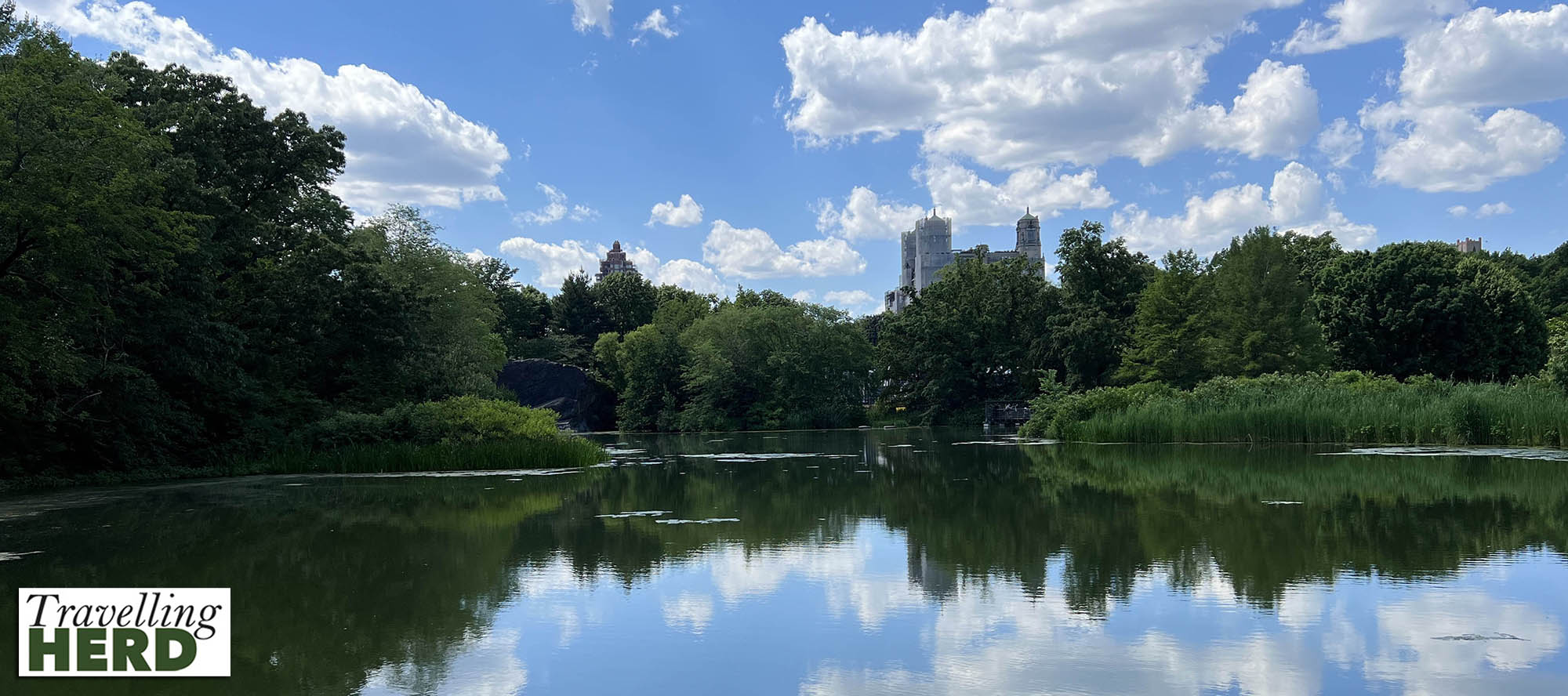
Five species of turtle live in the pond all year round, including red-eared sliders, snapping, painted, musk, and box turtles. By far the most common are the red-eared sliders identifiable by the red spots around their ears.
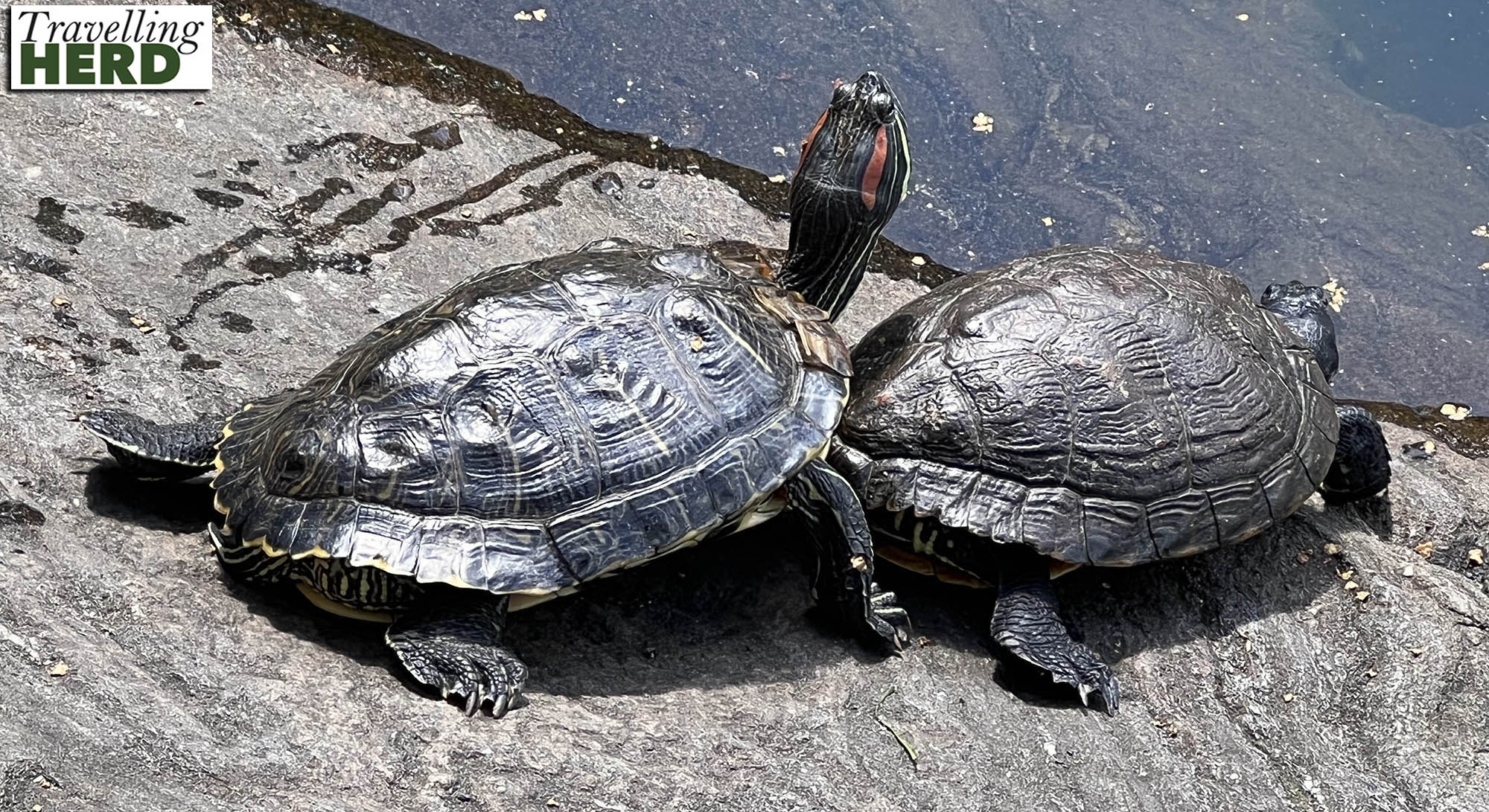
Although it is illegal to release pets or other animals of any kind in the park, most of the sliders in Turtle Pond are former pets. Unfortunately, they crowd out other species and contribute to algal blooms which disrupt the ecosystem.
Turtle Pond, originally called Belvedere Lake, is connected to the Great Lawn, both of which are on the site of the former Lower Reservoir.
Although we had seen Central Park from the Empire State Building, and new that it stretched for 51 blocks or 2.5 miles the scale of it was still surprising. On a sunny Saturday there were plenty of people playing ball games, sunbathing, walking, running, cycling, walking dogs and even giving impromptu a cappella concerts.
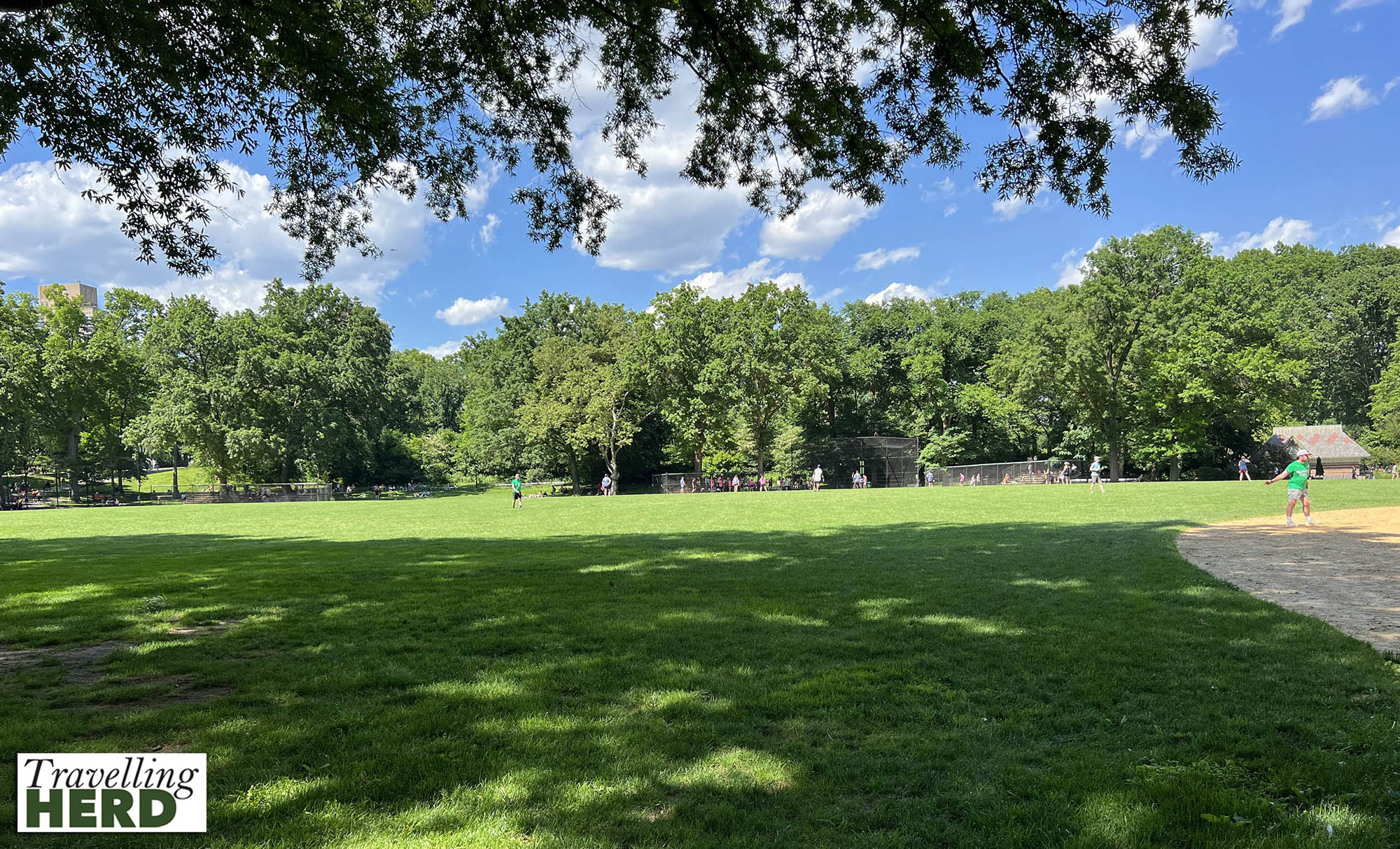
At the end of the day, we decided to return to Lucy’s as it was close to our hotel and the salads were served in edible bowls [see Dish of the day].
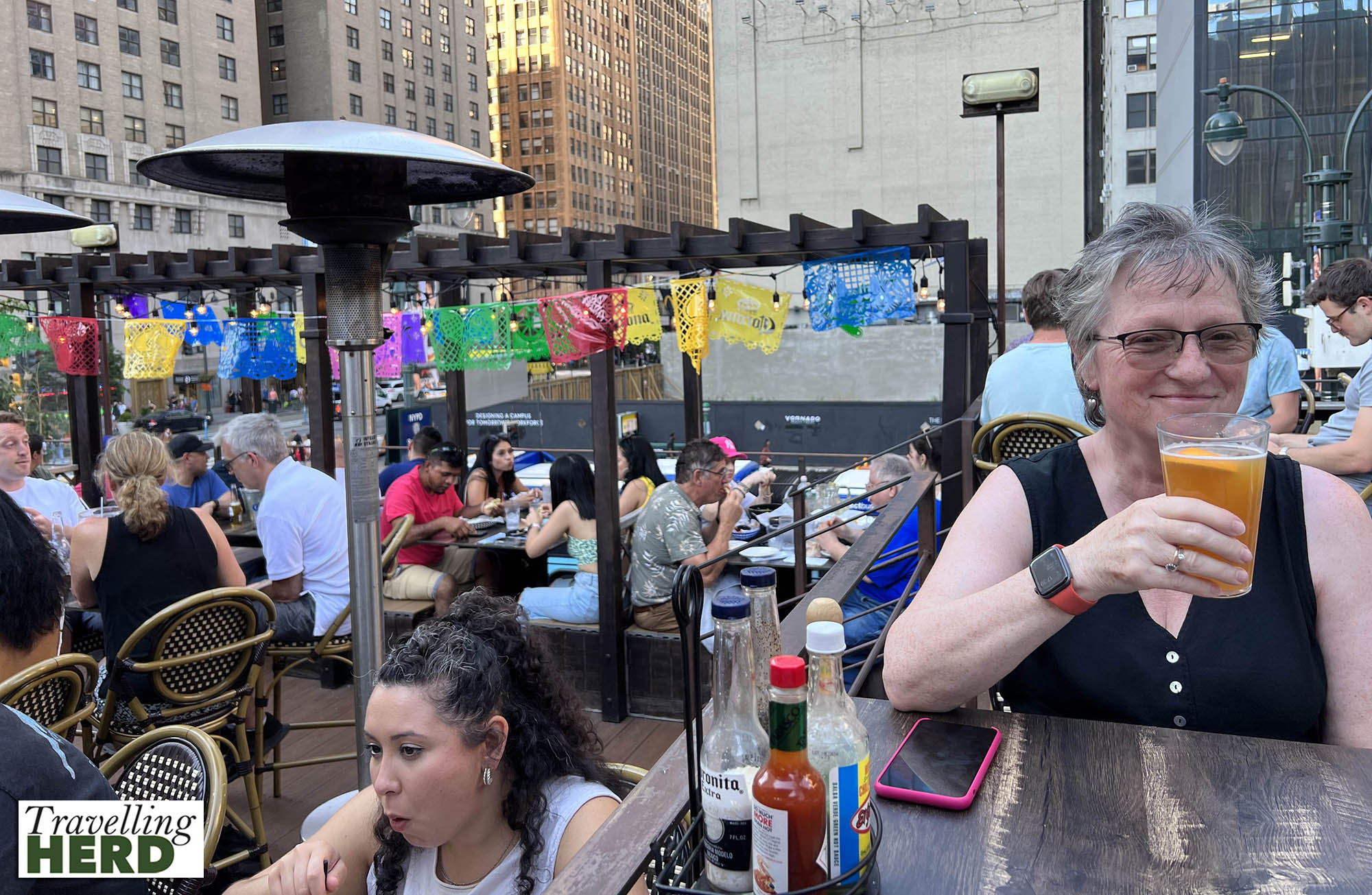
Robert felt the need to celebrate our negative tests and our last night in New York with a ‘Beergarita’ which features a bottle of lager served upside in a large goblet of frozen margarita.
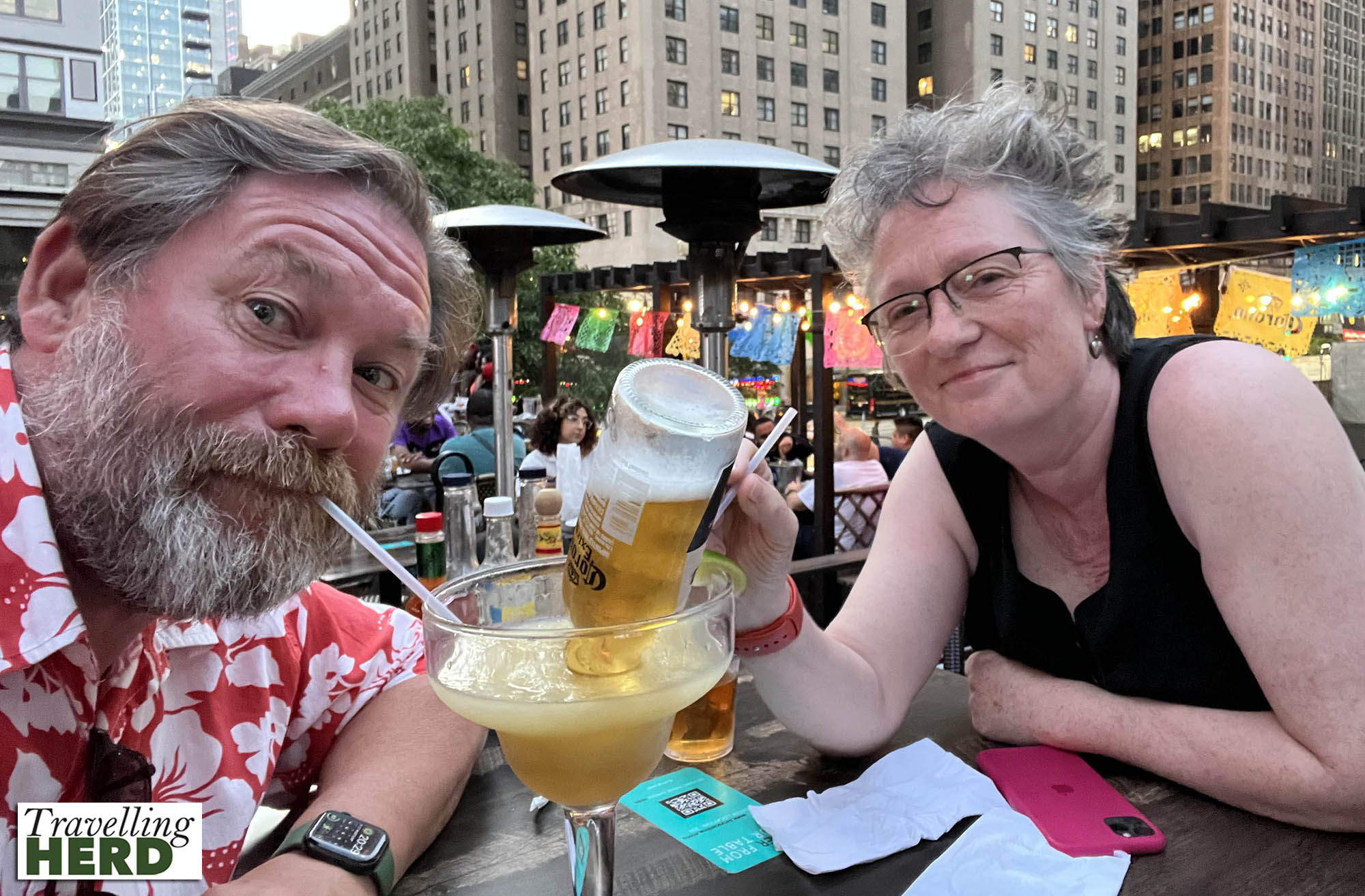
Video of the day:
Selfie of the day:

Dish of the day:

Route Map:






